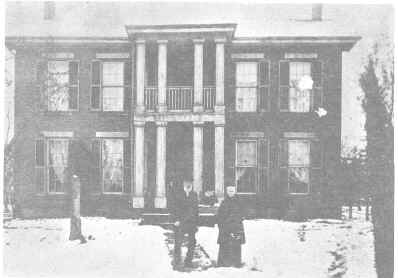 John Grant, one of the first settlers of the village of Lexington in Stark County, purchased a grant of land of 160 acres in 1812. He moved from Lexington to claim his land, which was bounded by the present Norfolk-Southern Railroad tracks, Union Avenue, Cambridge Street, and Rockhill Avenue. In 1842 he completed a beautiful brick house. Ten years later his son-in-law, Jonathan Ridgeway Haines, acquired the home.
John Grant, one of the first settlers of the village of Lexington in Stark County, purchased a grant of land of 160 acres in 1812. He moved from Lexington to claim his land, which was bounded by the present Norfolk-Southern Railroad tracks, Union Avenue, Cambridge Street, and Rockhill Avenue. In 1842 he completed a beautiful brick house. Ten years later his son-in-law, Jonathan Ridgeway Haines, acquired the home.
It was probably shortly thereafter that Mr. Haines, a Quaker and dedicated abolitionist, became an "agent" on the underground railroad. This "railroad" had been in operation since the late 1830s. It had "conductors", "agents", and "stations", but no tracks or locomotives. It was a secret network of homes whose owners wanted to help slaves who had escaped from their Southern masters reach freedom in the North.
Many slaves spent the daylight hours hidden in a tiny room above the Haines kitchen waiting until they could be hurried along through the darkness to the next "station". From Alliance they were taken through either Marlboro or Limaville to Randolph in Portage County and then north to safety.
Sara Grant Haines joined her husband in these activities. They were also very interested in the efforts to give women the right to vote, and in the crusade to ban the use of liquor.
Mr. and Mrs. Haines had six children. Their oldest son, John Columbus, a talented musician, left home as a teenager to join the Union Army in the Civil War. When he returned in 1865 he re-organized the Alliance City Band.
For about half a century the front yard of the house extended all the way to Main Street, but in the early 1890s the ground immediately surrounding it was subdivided into building lots for other houses, and new streets were added. Today the house is located on Market Street and is owned by the Alliance Area Preservation Society as a museum of local history and community center.
Read more about Haines House on their web site: www.haineshouse.org
Text revised by Haines House historian Robb Hyde, November 3, 2003.
